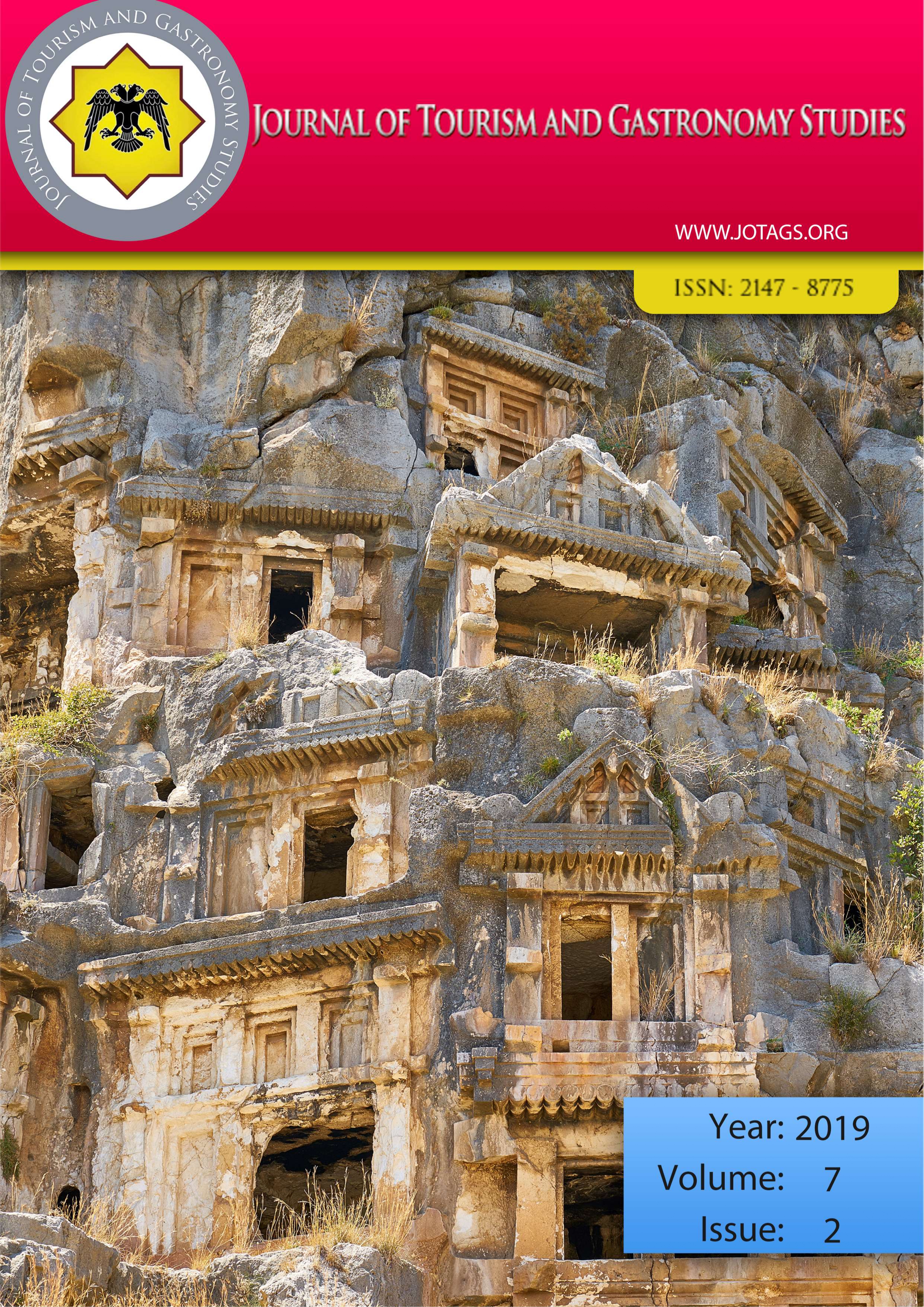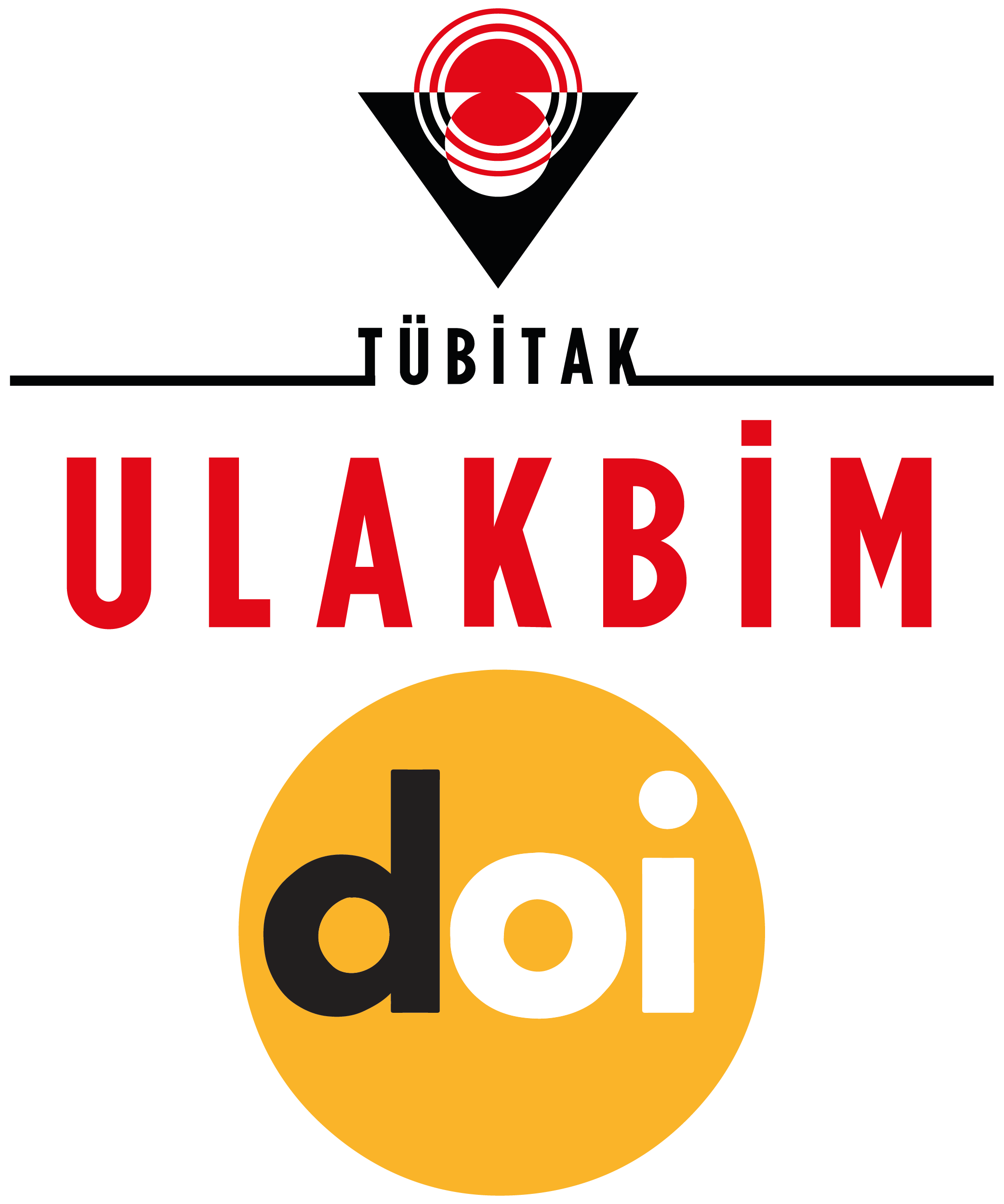Coğrafi İşaret Alma Sürecinde, Avanos-Nevşehir Testi Kebabına ait Standart Reçetenin Oluşturulması (Preparing Standard Recipe of Avanos-Nevşehir Pottery Kebab in the Process of Geographical Indication)
DOI:
https://doi.org/10.21325/jotags.2019.393Keywords:
Gastronomy, Pottery kebab, Cappadocia, Avanos, Geographical indicationAbstract
For the development of gastronomy tourism, which contributes to regional development, it is very important for the local people to protect their local dishes. Cappadocia region where nature and history are integrated in the best way, has special tastes in terms of gastronomy. One of the best examples of this is the pottery kebab prepared with the potteries produced in the district of Avanos where Kızılırmak passes. The traditional Pottery kebab is prepared by placing the meat and other ingredients in the Avanos potteries, which have received a geographical indication in the Avanos district, by cooking them in the tandoori. Tourists, who come to the Cappadocia region, want to taste this local food. However, according to the researches, especially when the platforms where the customer evaluations are examined, it was observed that most of the special taste was not prepared by the manufacturer in accordance with its original. This situation causes the region to lose a value in terms of gastronomic tourism. The local products representing the region where they are located can be registered and putted under protection with geographical indication. This study was carried out to investigate the Pottery kebab and making processes in the Cappadocia region, to establish scientifically the standard recipe and to contribute to the geographical indication registration process.
References
Aksaya, A. (2017). Kapadokya Testi Kebabı: Nerede Yenir Fiyatları ve Ünlü Restoranlar.
https://www.kapadokyadayim.com/testi-kebabi/ Erişim Tarihi: 27.01.2019
Aslan, E. E. (2012). Avanos Çömlekçiliğinde Kaybolan Bir Değer: Kara Fırın. İdil Dergisi, 1(4), 1-13.
Aslan, Z., Güneren, E., ve Çoban, G. (2014). Destinasyon markalaşma sürecinde yöresel mutfağın rolü: Nevşehir örneği. Journal of Tourism and Gastronomy Studies, 2(4), 3-13.
Ateş, E., Kaya, C., Esin, Y. (2014). Coğrafi İşaretli “Turhal Yoğurtmacı”nın Yöre Ekonomisi ve Tanıtımına Katkısı. 4. Geleneksel Gıdalar Sempozyumu, 405.
Berkmen, H. (2015). Avanos Kültür Varlıkları Çalışması, Kapadokya Bölgesinde Suyun İzi. Megaron, 10(4), 595-609.
Bucak, T., ve Aracı, Ü. E. (2013). Türkiye'de Gastronomi Turizmi Üzerine Genel Bir Değerlendirme. Balikesir University Journal Of Social Sciences Institute, 16(30).
Buyruk, L., İlhan, İ., & Özen, İ. A. (2017). Gastronomi Turizmi Ögesi Olarak Yozgat Testi Kebabı Ve Kapadokya Turizm Bölgesindeki Yiyecek İçecek İşletmelerinde Testi Kebabı Uygulamalarına Dair Eleştirel Bir Yaklaşım. 04-06 Mayıs 2017, 148.
Çağlı, I.B. (2012). Türkiye’de Yerel Kültürün Turizm Odaklı Kalkınmadaki Rolü: Gastronomi Turizmi Örneği. İstanbul Teknik Üniversitesi, Fen Bilimleri Enstitüsü, Yüksek Lisans Tezi, Şehir ve Bölge Planlama Anabilim Dalı, Bölge Planlama Programı, 111s.
Çakı, M. (1999). Neolitik Devrimin Bir Göstergesi Olarak Çömlekçilik. Anadolu Sanat Dergisi 10, 40-47.
Dengiz, O., GÖL.C, Ekberli, İ., & Özdemir, N. (2009). Farkli Alüviyal Teras Şekilleri Üzeri De Oluşmuş Topraklari Dağilimi Ve Özellikleri İ Belirlemesi. Anadolu Tarım Bilimleri Dergisi, 24(3), 184-193.
Durukan, M. (2018). “Özel Görüşme”, İşletme Sahibi ve Aşçı (45 yaşında), Zelve Restorant, Avanos, Nevşehir.
Ekinci, M.B. (2014). Coğrafi İşaretlemede Kullanılan Moleküler Biyolojik Teknikler. 4. Geleneksel Gıdalar Sempozyumu, 395.
Güldemir, O., ve Işık, N. (2011). Nevşehir Mutfak Kültürü ve Yemekleri. 1. Uluslararası Nevşehir Tarih ve Kültür Sempozyumu, 6, 16-19.
Hazarhun E., Tepeci M. (2018). Coğrafi İşarete Sahip Olan Yöresel Ürün ve Yemeklerin Manisa’nın Gastronomi Turizminin Gelişimine Katkısı. Güncel Turizm Araştırmaları Dergisi Cilt: 2, Sayı: Ek.1, Bahar: 371-389, e-ISSN: 2602-3008
Kan, M., ve Gülçubuk, B. (2008). Kırsal Ekonominin Canlanmasında ve Yerel Sahiplenmede Coğrafi İşaretler. UÜ Ziraat Fakültesi Dergisi, 22(2), 57-66.
Mercan, Ş. O. ve Üzülmez, M. (2014). Coğrafi İşaretlerin Bölgesel Turizm Gelişimindeki Önemi: Çanakkale İli Örneği. Dokuz Eylül Üniversitesi İktisadi ve İdari Bilimler Fakülte Dergisi, 29 (2), 67-94.
Oraman, Y. (2015). Türkiye’de Coğrafi İşaretli Ürünler. Balkan ve Yakın Doğu Sosyal Bilimler Dergisi, 1(1), 76-85.
Orhan, A. (2010). Yerel Değerlerin Turizm Ürününe Dönüştürülmesinde" Coğrafi İşaretlerin" Kullanımı: İzmit Pişmaniyesi Örneği. Anatolia: Turizm Arastirmalari Dergisi, 21(2).
Özbay S., Orhan, O., Ve Topaloğlu, H. R. (2014). Geleneksel Gıdalarda İzlenebilirlik Aracı Olarak CBS Kullanımı. 4. Geleneksel Gıdalar Sempozyumu, 35-38.
Şahin, G. (2013). Coğrafi İşaretlerin Önemi ve Vize (Kırıkkale)’nin Coğrafi İşaretleri. Pamukkale Üniversitesi Sosyal Bilimler Enstitüsü Dergisi, 15, 23-37.
Şengül, S. (2017). Türkiye'nin Gastronomi Turizmi Destinasyonlarının Belirlenmesi: Yerli Turistler Üzerine Bir Araştırma. Balikesir University Journal Of Social Sciences Institute, 20(37).
TPE Türk Patent Ensititüsü, (2017). Avanos Çöleği, Tescil No: 293 Coğrafi işaret amblemi, Avanos Belediye Başkanlığı.
UNWTO, (2012). Global Report on Food Tourism. http://cf.cdn.unwto.org/sites/all/files/docpdf/amreports4-foodtourism.pdf Erişim Tarihi 27.01.2019.
http://www.tanitma.gov.tr/TR,22783/kapadokya.html. Erişim tarihi: 15.10.2018
https://gastromanya.com/nevsehir-mutfagi-hakkinda-genel-bilgiler/ Erişim Tarihi: 27.01.2019
Downloads
Published
How to Cite
Issue
Section
License
Copyright (c) 2023 Journal of Tourism & Gastronomy Studies

This work is licensed under a Creative Commons Attribution-NonCommercial 4.0 International License.








